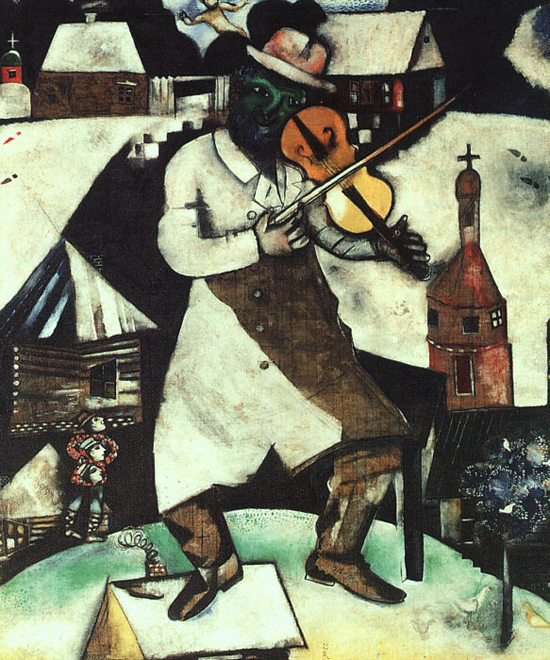Marc Chagall's Fiddlers

Black and Jewish - note the prayer shawl and the white hand in the painting above.
Chagall painted several of these fiddlers and this one is from 1923-24, shortly after Chagall and his wife Bella returned to Paris from Russia. The Guggenheim prefers to call him "The Green Violinist," but this elides the connections between Black and Jewish culture in France that Chagall observed: both were the victim of racial stereotypes and discrimination following the Dreyfus Affair and the French colonization of large parts of Africa. Chagall was fascinated by how notions of race could be expressed through color, inserting the reds and greens and yellows; and the symbolism of the fiddler is key. I'm always amused when art critics take Chagall at face value when he denied ever intentionally using symbolism in his art. Of course he did, but it was smarter to deny it.
The fiddler's music inspires the young boy to float skywards and himself to lift off the ground. Floating people appear in many of these Russian shtetl paintings as a metaphor for joy during hard times. Chagall was from Vitebsk originally, then just inside the original Pale of Settlement and now in NE Belarus near the border with Russia.

The fiddler paintings - another one, from 1913, is above - provided inspiration for the title of the musical Fiddler on the Roof (1964), although the story itself dates back to Sholem Aleichem's stories about Tevye the dairyman and his daughters in Boyberik back in 1894. (Boyberik is associated with Boyarka, near Kiev, where Aleichem lived for many years).
